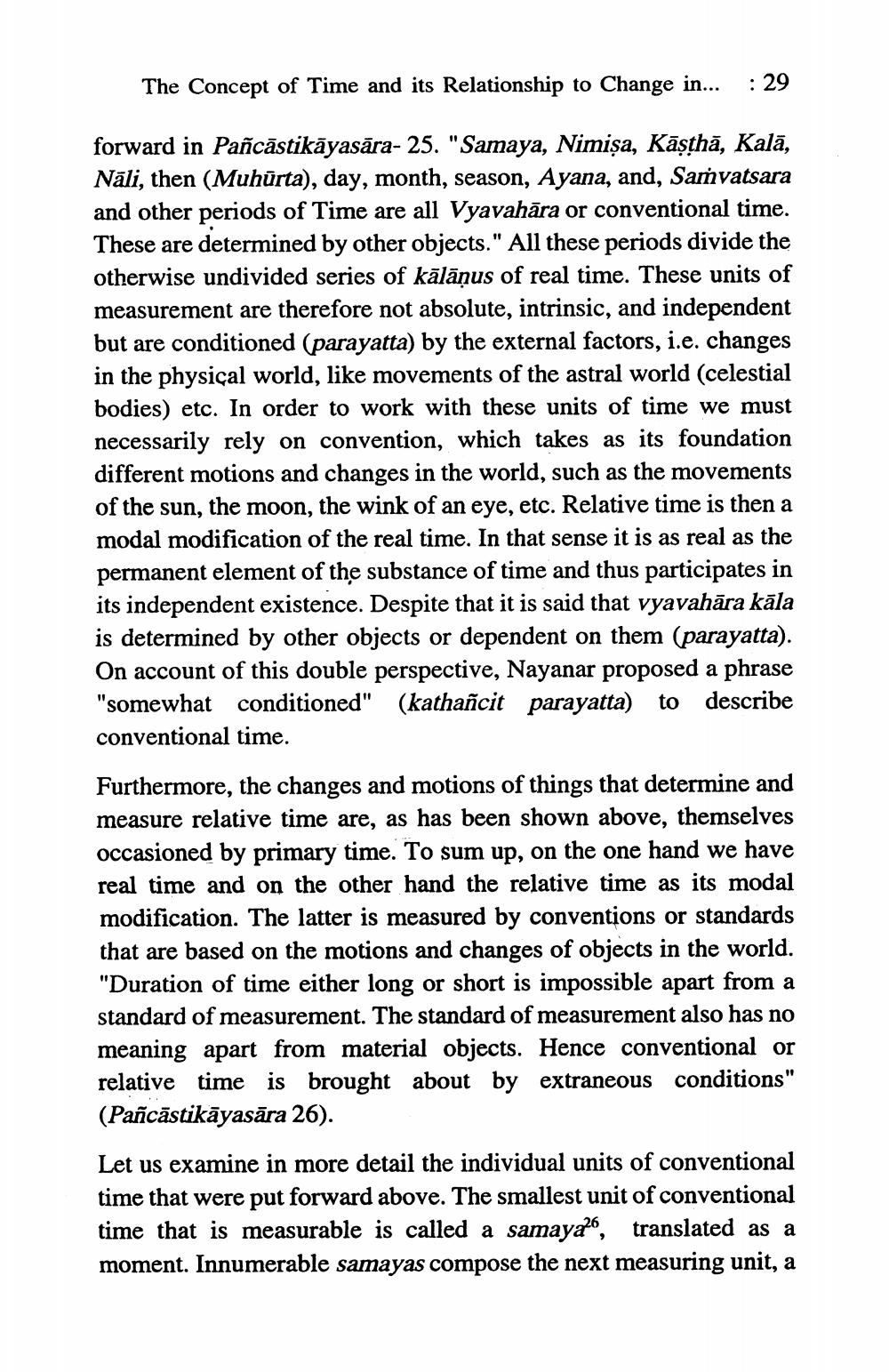________________
The Concept of Time and its Relationship to Change in...
: 29
forward in Pañcāstikāyasāra- 25. "Samaya, Nimișa, Kāşthā, Kalā, Nāli, then (Muhurta), day, month, season, Ayana, and, Samvatsara and other periods of Time are all Vyavahāra or conventional time. These are determined by other objects." All these periods divide the otherwise undivided series of kālāņus of real time. These units of measurement are therefore not absolute, intrinsic, and independent but are conditioned (parayatta) by the external factors, i.e. changes in the physical world, like movements of the astral world (celestial bodies) etc. In order to work with these units of time we must necessarily rely on convention, which takes as its foundation different motions and changes in the world, such as the movements of the sun, the moon, the wink of an eye, etc. Relative time is then a modal modification of the real time. In that sense it is as real as the permanent element of the substance of time and thus participates in its independent existence. Despite that it is said that vyavahāra kāla is determined by other objects or dependent on them (parayatta). On account of this double perspective, Nayanar proposed a phrase "somewhat conditioned" (kathañcit parayatta) to describe conventional time.
Furthermore, the changes and motions of things that determine and measure relative time are, as has been shown above, themselves occasioned by primary time. To sum up, on the one hand we have real time and on the other hand the relative time as its modal
lification. The latter is measured by conventions or standards that are based on the motions and changes of objects in the world. "Duration of time either long or short is impossible apart from a standard of measurement. The standard of measurement also has no meaning apart from material objects. Hence conventional or relative time is brought about by extraneous conditions" (Pañcāstikāyasāra 26).
Let us examine in more detail the individual units of conventional time that were put forward above. The smallest unit of conventional time that is measurable is called a samaya, translated as a moment. Innumerable samayas compose the next measuring unit, a




